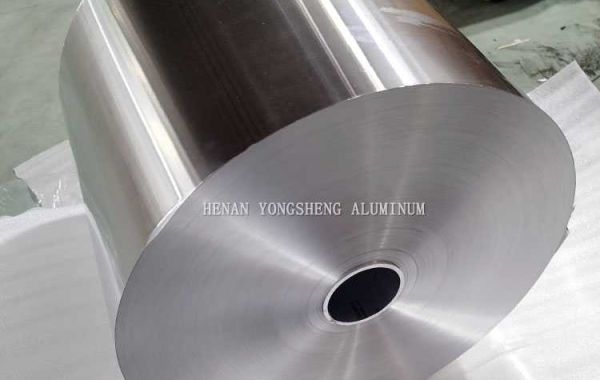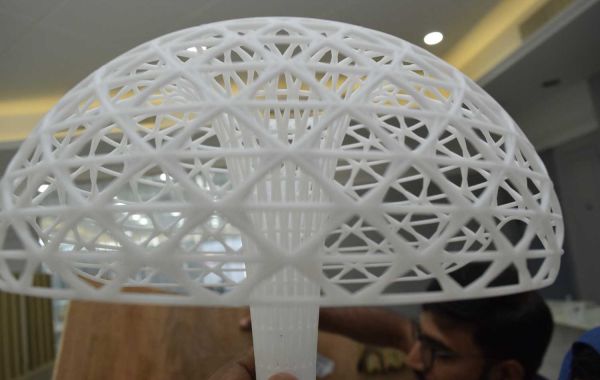Introduction
Aluminum foil is a highly adaptable material that finds broad use in a variety of industries, including packaging, culinary, baking, electrical, automotive, medical, construction, aerospace, industrial, and marine. Aluminium foil is normally categorized as thin, medium, or thick based on its thickness and varies in thickness according on the intended application. The average thickness of aluminum foil is less than 0.006 mm for thin foil and between 0.006 and 0.3 mm for medium foil. On the other hand, thick aluminum foil has a thickness greater than 0.3 mm.
Aluminum Foil Thicknesses
Aluminum foil comes in a variety of thicknesses, usually measured in micrometers (μm) or mils. Here are some common foil thicknesses: Standard Household Foil - This is the most commonly used type of foil for household use. It is usually about 0.016 mm (16 microns) or 0.0006 inches thick; Heavy Duty Aluminum Foil - Heavy Duty Aluminum Foil is thicker and more durable than standard household foil. It is commonly used for grilling, baking and wrapping heavier foods. Heavy duty foil is typically about 0.024 mm (24 microns) or 0.001 inch thick; Extra Heavy Duty Foil - Extra Heavy Duty Foil is thicker and stronger than heavy duty foil. It is designed for more demanding applications, such as industrial use or cooking large cuts of meat. Extra heavy duty foils range in thickness from 0.03 mm (30 microns) to 0.04 mm (40 microns) or more.
It is important to remember that these thicknesses are merely estimates that could vary significantly depending on the manufacturer. Additionally, there might be regionally specific norms for the thickness of aluminum foil. As a result, the information above should only be used as a general guide.
Applications of Thin Aluminum Foil
Less than 0.006 mm is the thickness of thin aluminum foil. It is frequently employed in the packaging sector(such as 8011 aluminum foil,8021 aluminum foil,8079 aluminum foil) to wrap medicinal, food, and cigarette items. Thin aluminum foil acts as a barrier against moisture, light, and oxygen, preserving the freshness and quality of the packaged goods. Batteries, insulation, and capacitors are some more uses for it in the electrical sector. Thermal insulation and heat shields are both made of thin aluminum foil in the automotive sector.
Applications of Medium Aluminum Foil
The thickness of medium aluminum foil ranges from 0.006-0.3 mm. It is frequently used to line baking pans and wrap food in the cooking and baking sector(such as 8011 aluminum foil,8021 aluminum foil,8079 aluminum foil). Medium aluminum foil acts as a barrier against moisture and germs and can resist high temperatures. The packaging of pharmaceuticals and medical devices in the medical sector uses medium aluminum foil. The seal is sterile and tamper-evident. Medium aluminum foil is used in the building sector as vapor barriers and insulation.
Applications of Thick Aluminum Foil
The thickness of aluminum foil is more than 0.2 millimeters. It is frequently used for aircraft parts and structures in the aerospace sector. For aerospace applications, thick aluminum foil offers superior strength and endurance. Heat exchangers and processing machinery in the industrial sector use thick aluminum foil. It has good thermal conductivity and corrosion resistance. For hulls and superstructures, marine industry uses thick aluminum foil. Both high strength and saltwater corrosion resistance are provided.
Advantages of Different Thicknesses
Aluminum foil that is less than 0.006mm thick is light, flexible, and simple to handle. It works well for dishcovering, food wrapping, and other typical home tasks. Additionally, due to its thinness, it may easily adapt to a variety of shapes;Compared to thin foil, medium aluminum foil (0.006 to 0.3 mm) is thicker and more robust. It is great for baking and cooking because it is heat resistant and can sustain higher temperatures. To shield goods from moisture and other environmental factors, medium foil is frequently used in the packaging sector;Of the three thicknesses, thick aluminum foil (above 0.3 mm) is the sturdiest and most resilient. It is excellent for industrial, marine, and aerospace applications because of its strong corrosion resistance and ability to handle extreme environments.
Disadvantages of Different Thicknesses
Aluminium foils that are too thin are more likely to tear or puncture, which makes them unsuitable for uses that call for high durability and resistance to physical harm.Due of its potential inadequacy as protection, medium aluminum may not be appropriate for applications demanding great strength and heat resistance.Aluminium foil that is too thick is expensive, cumbersome, and heavy. It might not be appropriate for applications that call for lightweight and flexible materials.
Factors to Consider When Choosing Aluminum Foil Thickness
When choosing the foil thickness, it is important to take into account a wide range of factors, including application needs, material requirements, budgetary restrictions, desired strength, flexibility, and durability. Final screening should also take into account environmental variables and performance standards.
Present And Future
The aluminum foil industry has set thickness tolerance norms. Micrometers and laser gauges are used to measure the thickness of aluminum foil. Aluminum foil quality is ensured through rigorous examination and testing.The aluminum foil industry is continually evolving new technology and applications. Because of technological advancements and creative applications for various thicknesses, the future of aluminum foil thickness looks optimistic. Ultra-thin aluminum foil, for example, is gaining popularity in sensor and flexible electronics applications.
Conclusion
In conclusion, aluminum foil's thickness is very important in defining the applications for it. The packaging and electrical industries frequently utilize thin aluminum foil, such as 8011 aluminum foil,8021 aluminum foil,8079 aluminum foil etc; whereas the culinary, baking, and medical businesses frequently use medium aluminum foil;The aerospace, industrial, and marine industries all employ thick aluminum foil. The choice of thickness should be based on the requirements of the particular application because each thickness has benefits and drawbacks. The aluminum foil industry strives to become more environmentally friendly and sustainably operated. The future of aluminum foil thickness in new and emerging applications is bright given the industry's ongoing innovation.








